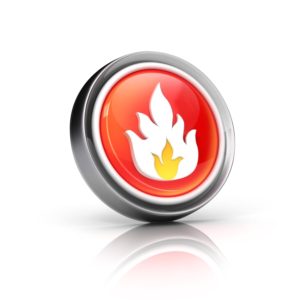
Carbon Monoxide Detector Placement – Any home that utilizes propane, natural gas, or any other fossil fuel should have carbon monoxide detectors. If you use those fuels in your home, you probably already know that the detectors are necessary.
What you may not know is exactly where to place the detectors for optimum performance. There are many different variables involved in this decision so there’s often a shortage of consistent information on the topic. These eight suggestions can help you make the right decision. Click here for the Best-Selling Fire Safety Products.
Check Local Codes First
The most important source of information about where to put carbon monoxide detectors will be local regulations. Those regulations have been developed with your safety in mind. If your state, county, city, or another level of government has mandated certain locations for carbon monoxide detectors, make sure to comply with those requirements. You can always go beyond what they require, but you want to meet those standards at a minimum.
Review Manufacturer Recommendations
After purchasing your carbon monoxide detectors, review their owner’s manual. The manufacturer will likely provide some guidance on exactly where you should install the carbon monoxide detectors. Remember that because these suggestions are based on their own understanding of the product they have developed, they will give you the best possible ideas of where to place detectors.
Height is a factor that is likely to be addressed, with some companies suggesting you put detectors on the ceiling, some saying at “breathing height”, and others using receptacle-mounted designs that place the detector near floor level.
Cover Likely Source Areas
Just as you want smoke detectors near fire-prone areas, carbon monoxide detectors belong near the equipment that can trigger them. The further away the detector is located, the longer it takes for it to detect the problem.
Place a detector near your water heater, furnace, or any other fossil fuel-powered appliance you have in your home. This will provide the earliest possible alert for you and your family when something has gone wrong, which can mean several additional minutes to leave the house safely.
Bedroom Areas
There’s nothing wrong with putting a carbon monoxide detector in every bedroom, but it’s not essential. Because most homes have bedrooms clustered together, a single detector in that immediate area will fit the bill just fine.
Likely exceptions to this general idea could be having someone in the home who is hard of hearing or having gas appliances inside the bedrooms themselves. In those cases, it is best to have a detector inside each room.
Every Floor
Once bedrooms are taken care of, your next step will be to put a detector on every floor of the home. This will ensure that no matter where you are, a detector will be close by.
This is especially helpful when appliances are located in the basement. In a two-story home, that can put them two full floors away from sleeping areas. Get coverage on each level to get the earliest possible alert.
Consider Centralized Setups
Even with a detector activating in the basement, you may not hear the alarm if you’re asleep on the second floor. Carbon monoxide detectors are now available in linked systems now.
The detectors activate and simultaneously send a signal to all the other detectors in the home that activates them as well, even if none of them has picked up any carbon monoxide. A centralized home alarm system can do the same thing.
Avoid Problem Areas
Good detector placement requires that you stay away from areas that can interfere with the detector’s operation. If drafty areas like windows or doors are close by, the fresh air from outside can dilute the carbon monoxide and delay or even prevent the activation of the alarm.
Dead ends like closets and long hallways often lack enough air circulation to let carbon monoxide mix into the air, so they should be avoided as well. Place your units in open areas with good air movement.
Consult Safety Authorities
When in doubt, ask an expert. There are two key authorities with expertise in the placement of carbon monoxide detectors. In the United States, the National Fire Protection Association (NFPA) offers guidelines on countless topics, from electrical installation requirements to equipment used by fire departments.
Also in their resources are standards on the installation and use of carbon monoxide detectors. The NFPA may be able to provide some ideas that you hadn’t thought of previously. Their counterpart in Great Britain is the British Standards Institute, which offers similar suggestions and information.
Carbon monoxide is a deadly hazard in your home. Preventing illness and death from exposure to this toxic gas requires first that you keep your appliances in top working condition, but it also requires that you install carbon monoxide detectors throughout the home so that any malfunction is identified before it can pose a threat to your family.
For that monitoring to be effective, detectors should be placed in appropriate locations to maximize the likelihood that they will pick up the earliest signs of a problem. This guide is a good starting point, but don’t hesitate to install as many detectors as you feel are necessary.